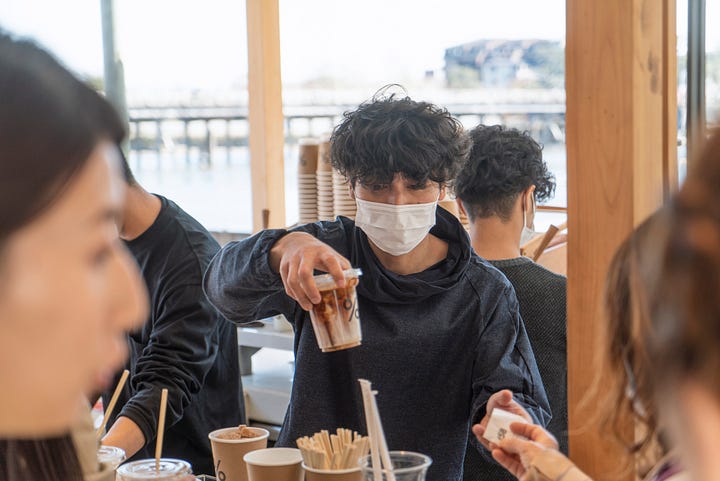Outdoor Dining & Cooler Temps: Winter Restaurant Safety Tips

It is no secret that operating outdoors is the “new normal”. New outdoor dining areas have been built at restaurants all over the State, and with them come new potential hazards — especially in winter.
Proper lighting
Sectioned off street parking is where many new dining areas have been built. Proper lighting can help these spaces be more visible at night — particularly in urban areas — where traffic is now mere feet away from restaurant employees and patrons. Members of the Storefront Safety Council have said, “the closer the proximity to traffic, the greater the risk will be…[certain barricades] won’t repel a car [that] turns the corner too sharply”.
Many cities have established programs to assist with these outdoor spaces. “Shared Spaces” (in San Francisco) and “LA Al Fresco” (in Los Angeles) have provided restaurants with concrete sections and water-filled barricades to help combat traffic hazards. Consider lighting these barricades to help oncoming traffic see them better .
Additionally, to prevent trips and falls, try increasing the lighting in the entrances, walkways, and surfaces within these new outdoor dining areas. Earlier sunsets will make these areas more difficult to see by both employees and patrons.
Heating
Enhancing these new outdoor spaces with heat lamps, space heaters, or fire pits is the next step for many businesses as winter inches closer. Investments towards the future have already been seen taking root.
Some restaurants have started purchasing high-end solutions such as tents and air-circulated igloos. More budget-conscious businesses have opted for easier additions, such as providing blanket service for patrons.
If blanket service is offered, businesses should be mindful of possible trips on these fabrics, as well as the appropriate post-use laundering to prevent the spread of COVID-19.
Take note of these blankets in conjunction with heat sources within these outdoor spaces. Business owners and employees should be mindful of the distance between outdoor heat sources and any materials which could potentially burn. Businesses might consider having an outdoor fire extinguisher on-hand in addition to the standard indoor requirements.
If California takes cues from other American cities — like Chicago — as outdoor structures become more enclosed, placards may be needed to warn customers about the increased risk of contracting COVID-19. This may trend faster if business owners continue to make significant structural amendments to their outdoor dining areas — especially in chillier Northern California.
The end of Daylight Savings Time is right around the corner. Earlier sunsets and colder temperatures bring a new list of challenges for restaurant owners and patrons. By considering additional lighting and being mindful of heat sources, California restaurant owners — and their employees — can stay safe and injury-free.
For more information about this or other safety tactics for your workplace, feel free to contact our team of Risk Advisors at [email protected].
Products and services are provided by one or more insurance company subsidiaries of W. R. Berkley Corporation. Not all products and services are available in every jurisdiction, and the precise coverage afforded by any insurer is subject to the actual terms and conditions of the policies as issued.
SOURCES:
https://sf.eater.com/2020/8/3/21352921/john-king-outdoor-dining-shared-spaces
https://restaurant.org/articles/news/what-to-do-when-its-too-cold-to-dine-outside
https://www.foodservicedirector.com/operations/what-happens-outdoor-dining-when-it-gets-colder

